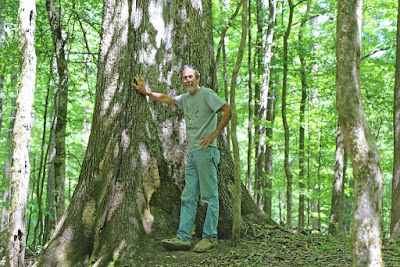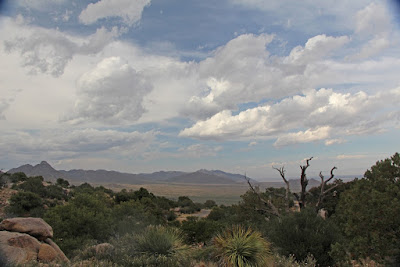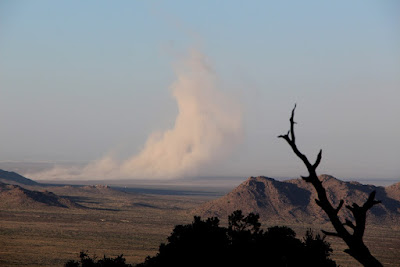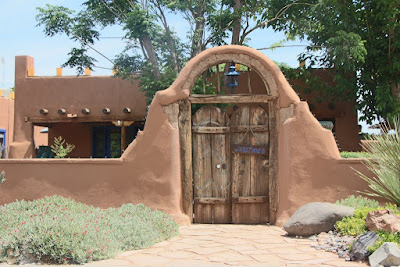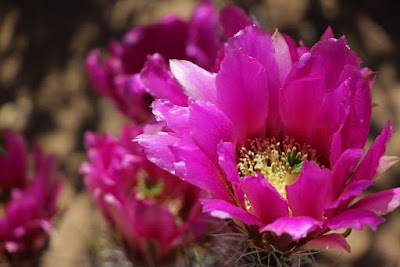We left the land of enchantment and entered the wasteland that is West Texas. The endless flat fields of Texas spread to the horizon. Except for that which lies beneath the surface, they seem to be worthless, populated only by oil pumps and tanks. The landscape looks like it is full of prehistoric animals. The two lane road with its ridiculously high speed limit was filled with dusty pickups loaded with tools and oil field equipment. At times, we thought we were back in Mexico. Drivers created a third lane on the rough road by driving halfway on the shoulder. This gave room for faster traffic to pass while straddling the broken white line.
Our first
stop was at Monahans Sandhills State Park.
Texas has an excellent state park system. The attraction here is the sand dunes. Thousands of years ago, this semi-arid area
was much wetter than it is today.
Erosion of silt and sand from the southern Rocky Mountains was deposited
by streams and rivers on the Pecos flood plain.
Some 25,000 years ago, the climate became drier and the streams dried up and left the deposits to the mercy of the winds that continually sweep across the region. The resulting dunes, some as high as 70 feet, stretch 200 miles across New Mexico and Texas. Today, even though the area is semi-arid, it does receive some rainfall and windmills attest to the groundwater that lies beneath the surface.
Some 25,000 years ago, the climate became drier and the streams dried up and left the deposits to the mercy of the winds that continually sweep across the region. The resulting dunes, some as high as 70 feet, stretch 200 miles across New Mexico and Texas. Today, even though the area is semi-arid, it does receive some rainfall and windmills attest to the groundwater that lies beneath the surface.
Our final
stop on the homeward journey was at Rocky Springs Campground on the Natchez
Trace in Mississippi.
The Trace was one of the most traveled highways in the old American Southwest. President Jefferson designated a road to be built between Nashville, TN and Natchez, MS. It followed a trail used for thousands of years by animals and Native Americans and provided an overland route from the Cumberland and Tennessee rivers to the Mississippi. This was especially important for northbound traffic.
With the arrival of the steamboat, the route fell into disuse. In many places, you can see where the road cut through the forests. You can walk in the footsteps of people who traveled its path for centuries. Giant trees that were saplings back then shade the trail. Other trees that were witness to the journeys of men now gone, like those people, lie dead on the ground.
The Trace was one of the most traveled highways in the old American Southwest. President Jefferson designated a road to be built between Nashville, TN and Natchez, MS. It followed a trail used for thousands of years by animals and Native Americans and provided an overland route from the Cumberland and Tennessee rivers to the Mississippi. This was especially important for northbound traffic.
With the arrival of the steamboat, the route fell into disuse. In many places, you can see where the road cut through the forests. You can walk in the footsteps of people who traveled its path for centuries. Giant trees that were saplings back then shade the trail. Other trees that were witness to the journeys of men now gone, like those people, lie dead on the ground.









